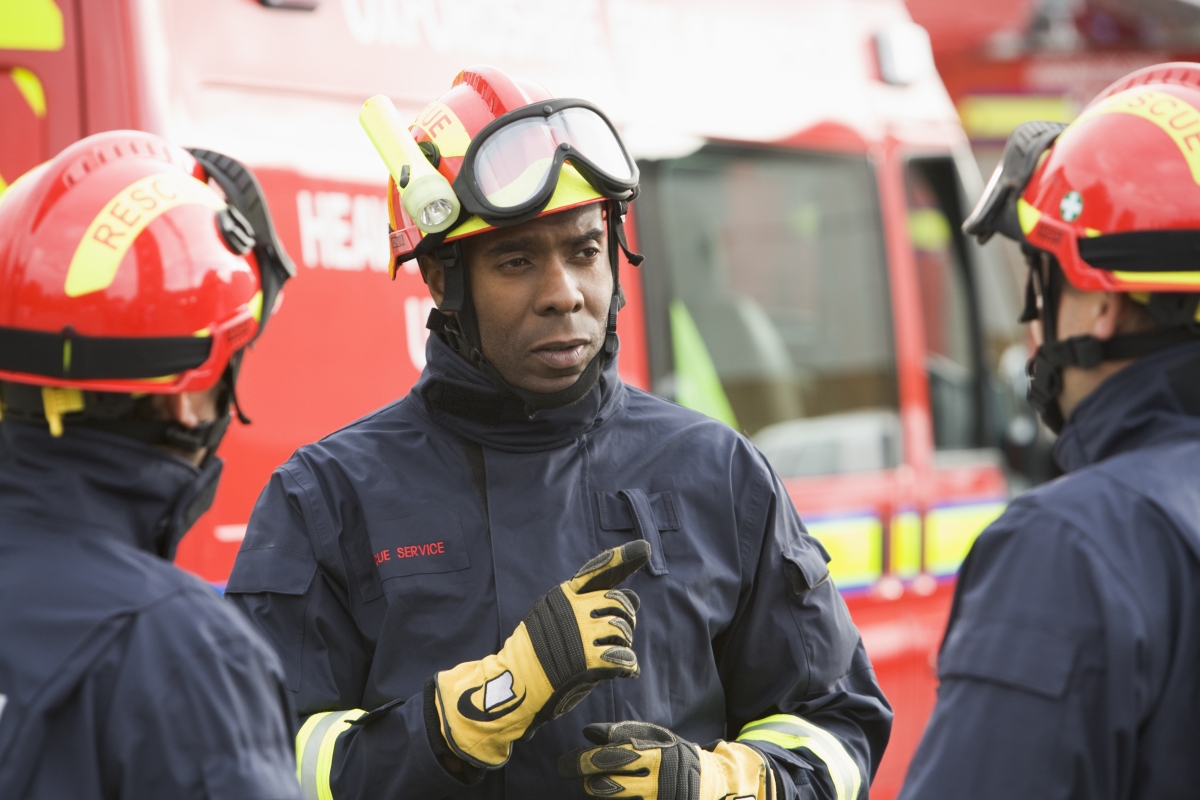Career Overview
Fire chiefs and senior firefighting officers:
- Plan, organize and direct firefighting operations and fire prevention activities in fire departments
- Work for municipal and federal governments and for industrial establishments with firefighting services
Job Titles
Duties
Fire chiefs and senior firefighting officers perform some or all of the following duties:
- Develop, put into use and evaluate policies and procedures for the operation of a municipal fire department, a district fire region or an industrial firefighting service
- Plan, direct and co-ordinate firefighting strategies for fire departments
- Evaluate the type of fire, the extent of damage to buildings and the danger to nearby establishments
- Direct activities at the scene of a fire
- Determine damage estimates and investigate the potential causes of a fire after extinguished
- Direct the training of personnel in firefighting methods
- Develop and oversee the use of fire prevention campaigns
- Represent the fire department in communications with government, the media and the public
- Co-ordinate and monitor budget and departmental resources
Earnings
Earnings is income that workers receive in exchange for their labour. Depending on the type of employment, earnings can be in the form of wages (hourly), salaries (fixed monthly or annual) or self-employed earnings.
Work Environment
# Workers Employed
495% Employed Full Time
88%Work in this occupation is typically performed in a structured environment, such as an office.
Career Pathways
Career path information is currently not available.
Related Careers
Occupational Interests
It’s important to understand what kinds of occupations align with your interests.
For more about occupational interests visit Skills for the Future Workforce > Characteristics.
Here are the top occupational interest(s) for this career profile:
Education, Training and Skills
- Completion of secondary school is required
- Completion of a college program in fire protection technology, fire science or a related field is usually required
- Completion of a provincial or municipal firefighters training course is required
- A minimum of ten years of experience as a firefighter is usually required before becoming eligible for a senior officer position
Education programs in B.C.
The following program areas are related to this occupation:
- Fire Fighting Related

Skills
Every job calls for a certain set of skills. Knowing those skills is the first step in finding a good career fit.
Here, you will find the 10 most relevant workplace skills. Some are more important to achieving success in a certain career than others. These skills may come naturally to you or you may need to gain them through education, training and experience.
See the list of work-related skills below, ranked in order of importance for this career. Check out the list and see if this career matches your skills—take that first step!
Giving full attention to what other people are saying, taking time to understand the points being made, asking questions as appropriate, and not interrupting at inappropriate times.
Talking to others to share information effectively.
Using logic and reasoning to identify the strengths and weaknesses of alternative solutions, conclusions or approaches to problems.
Being aware of others’ reactions and understanding why they react as they do.
Understanding written sentences and paragraphs in work-related documents.
Keeping track of and assessing your performance, other individuals, or organizations to make improvements or take corrective action.
Adjusting actions in relation to others' actions.
Communicating effectively in writing as appropriate for the needs of the audience.
Managing one’s own time and the time of others.
Convincing others to change their mind or behaviour.
Labour Market Statistics
Discover data, facts and information that have been gathered and analyzed. Learn about the characteristics of the economy and labour market in B.C.
Employment
Find out about employment types and trends by region and industry.
Employment
495Employment by Region







| Region | Employment | % Employment of this Occupation |
|---|---|---|
| Cariboo | 10 | 2.0% |
| Kootenay | 65 | 13.1% |
| Mainland/Southwest | 150 | 30.3% |
| North Coast and Nechako | 35 | 7.1% |
| Northeast | 30 | 6.1% |
| Thompson-Okanagan | 85 | 17.2% |
| Vancouver Island/Coast | 115 | 23.2% |
Labour Market Outlook
The B.C. Labour Market Outlook is a 10-year forecast of the expected supply and demand for labour in the province. It’s usually updated every year. The purpose is to provide British Columbians with the knowledge to make informed decisions on careers, skills training, education and hiring.
Forecasted Job Openings (2024-2034)
390Forecasted Job Openings
Forecasted Employment Growth Rate
Composition of Job Openings
Job Openings by Region (2024-2034)







| Region | Job Openings | Avg. Annual Employment Growth |
|---|---|---|
| Cariboo | Not available | Not available |
| Kootenay | 50 | 0.0% |
| Mainland/Southwest | 140 | 1.7% |
| North Coast and Nechako | Not available | Not available |
| Northeast | 10 | -0.4% |
| Thompson-Okanagan | 70 | 0.9% |
| Vancouver Island/Coast | 120 | 2.2% |
Industry Highlights
Learn about the opportunities in B.C.'s major industries, including employment trends, earning potential, locations of work and more.
Forecasted Job Openings by Industry
| Industry | Job Openings (2024-2034) |
|---|---|
| Public Administration | 390 |
Resources
Resource information is currently not available.







